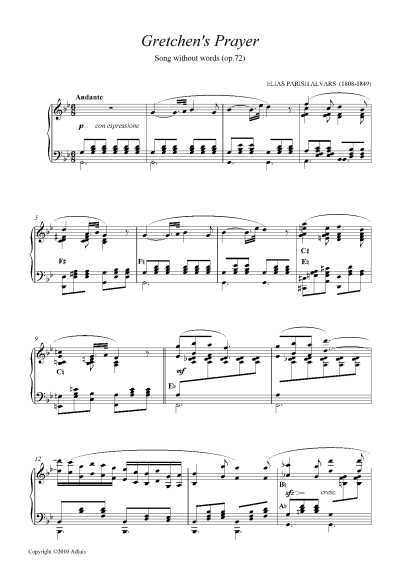 |
|||
| |
of Harp Music |
| © 2004-2025 ADLAIS |
| Gretchen's
Prayer Song without words (op. 72) Elias Parish Alvars (1808-1849) |
return to previous page |
 |
Work: | Single work for solo harp |
| Catalogue No: | Adlais 180 | |
| ISMN: | 979-0-57032-163-6 | |
| Edition: | 2010 A4 stapled | |
| Duration: | c. 2' 25" minutes | |
| Suitable for: | Grade 5-6 Pedal Harp | |
| Price:: | £6.00 Go to shop | |
| See all Adlais Publications by Elias Parish Alvars | ||
Gretchen's Prayer – Song without words (op. 72) Gretchen's Prayer is the second of Parish Alvars's two Illustrations of German Poetry for the Harp, published simultaneously in both Mainz (Schott) and London (Boosey), the latter firm publishing the piece in its Foreign Musical Library series. The text on Boosey's title page is in German
and reads: Gretchen is the tragic heroine of Goethe's brilliant epic melodrama 'Faust', published in 1808, and widely considered to be the greatest work of German literature. The scene is set on the city ramparts, where Gretchen is at a shrine dedicated to the Mater Dolorosa, set in a niche in the wall. She places flowers in a vase, and kneels to pray. Ach neige Wohin ich immer gehe
|

